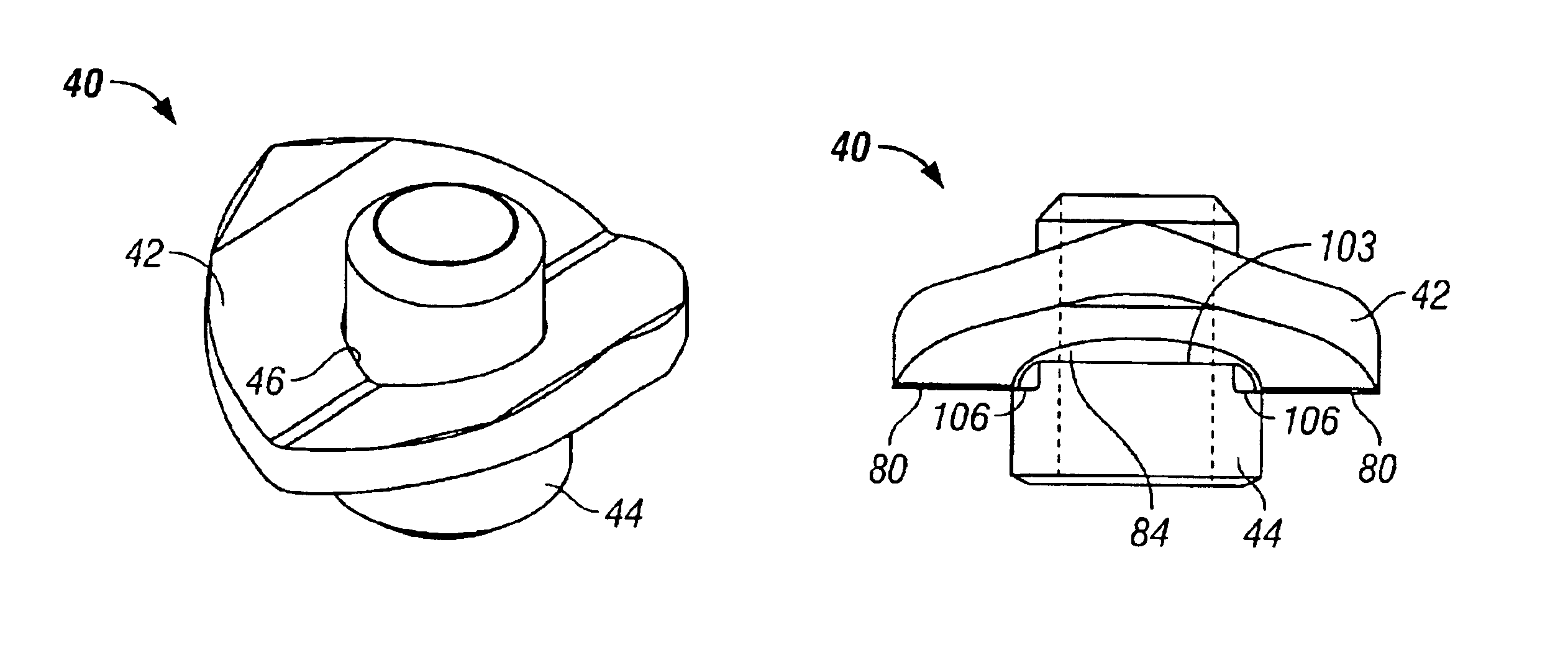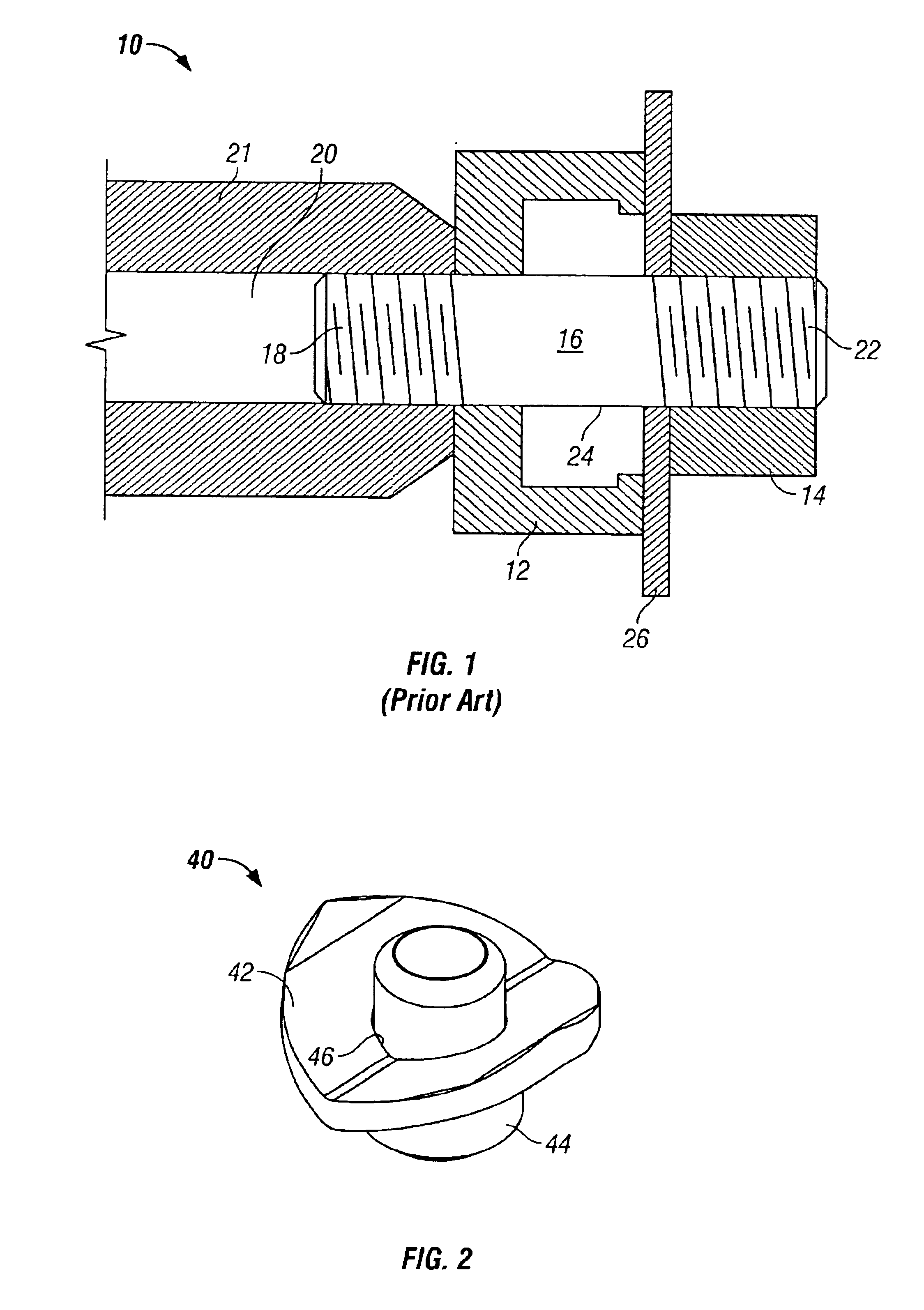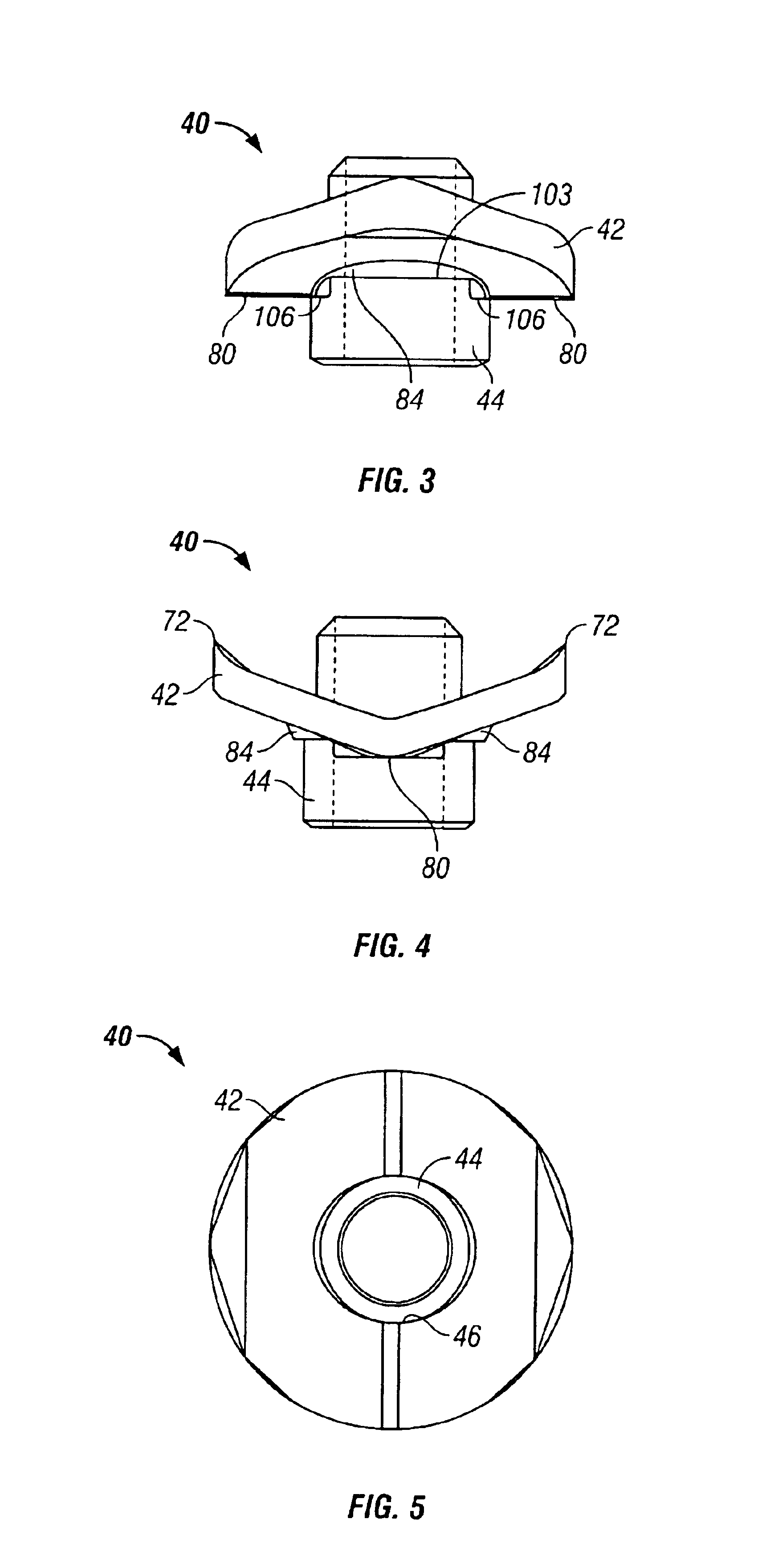Two piece punch with pilot hole locator
a pilot hole locator and two-piece technology, applied in the field of improved punches, can solve the problems of insufficient positioning of the hole to be created, added to the cost of the punch assembly, and insufficient locating of the prior art punch assembly, so as to achieve the effect of improving the alignment of the punch
- Summary
- Abstract
- Description
- Claims
- Application Information
AI Technical Summary
Benefits of technology
Problems solved by technology
Method used
Image
Examples
first embodiment
[0036]the cutter 42 is best illustrated in FIGS. 6-9. The cutter 42 generally includes a proximal surface 50, a distal surface 52 and the circular aperture 46. The proximal surface 50 will be positioned proximate the workpiece to be cut. As viewed in a plan view (FIG. 9), the cutter 42 is generally circular. The proximal surface 50 of the cutter 42 includes center surfaces 54, first inclined surfaces 56 and second inclined surface 58.
[0037]As best shown in FIG. 9, the center surfaces 54 extend from opposite sides of the perimeter of the aperture 46 to the perimeter of the proximal surface 50. The first inclined surfaces 56 are generally arch shaped and are diametrically opposed. Each first inclined surface includes an inner edge 64, an outer edge 66, and cutting edges 68. The inner edges 64 of each of the first inclined surfaces 56 are generally C-shaped and abut center surfaces 54 and the aperture 46. Each outer edge 66 is spaced from the aperture 46 and is generally parallel to th...
second embodiment
[0046]the cutter is shown in FIGS. 14-18. The cutter 142 includes a proximal surface 150, a distal surface 152 and a circular aperture 146. The proximal surface 150 will be positioned proximate the workpiece to be cut. As viewed in a plan view (FIG. 17), the cutter 142 is generally circular. The proximal surface 150 of the cutter 142 includes center surfaces 154, first inclined surfaces 156, and second inclined surface 158.
[0047]As best shown in FIG. 17, the center surfaces 154 extend from opposite sides of the perimeter of the aperture 146 to the perimeter of the proximal surface 150. Each first inclined surface 156 includes an inner edge 164, an outer edge 166, and cutting edges 168. The inner edges 164 of each of the first inclined surfaces 156 are generally C-shaped and abut center surfaces 154 and the aperture 146. Each outer edge 166 is spaced from the aperture 146 and is generally parallel to the center surfaces 154. The cutting edges 168 extend along the perimeter of the pro...
PUM
| Property | Measurement | Unit |
|---|---|---|
| angle | aaaaa | aaaaa |
| angle | aaaaa | aaaaa |
| angle | aaaaa | aaaaa |
Abstract
Description
Claims
Application Information
 Login to View More
Login to View More - R&D
- Intellectual Property
- Life Sciences
- Materials
- Tech Scout
- Unparalleled Data Quality
- Higher Quality Content
- 60% Fewer Hallucinations
Browse by: Latest US Patents, China's latest patents, Technical Efficacy Thesaurus, Application Domain, Technology Topic, Popular Technical Reports.
© 2025 PatSnap. All rights reserved.Legal|Privacy policy|Modern Slavery Act Transparency Statement|Sitemap|About US| Contact US: help@patsnap.com



